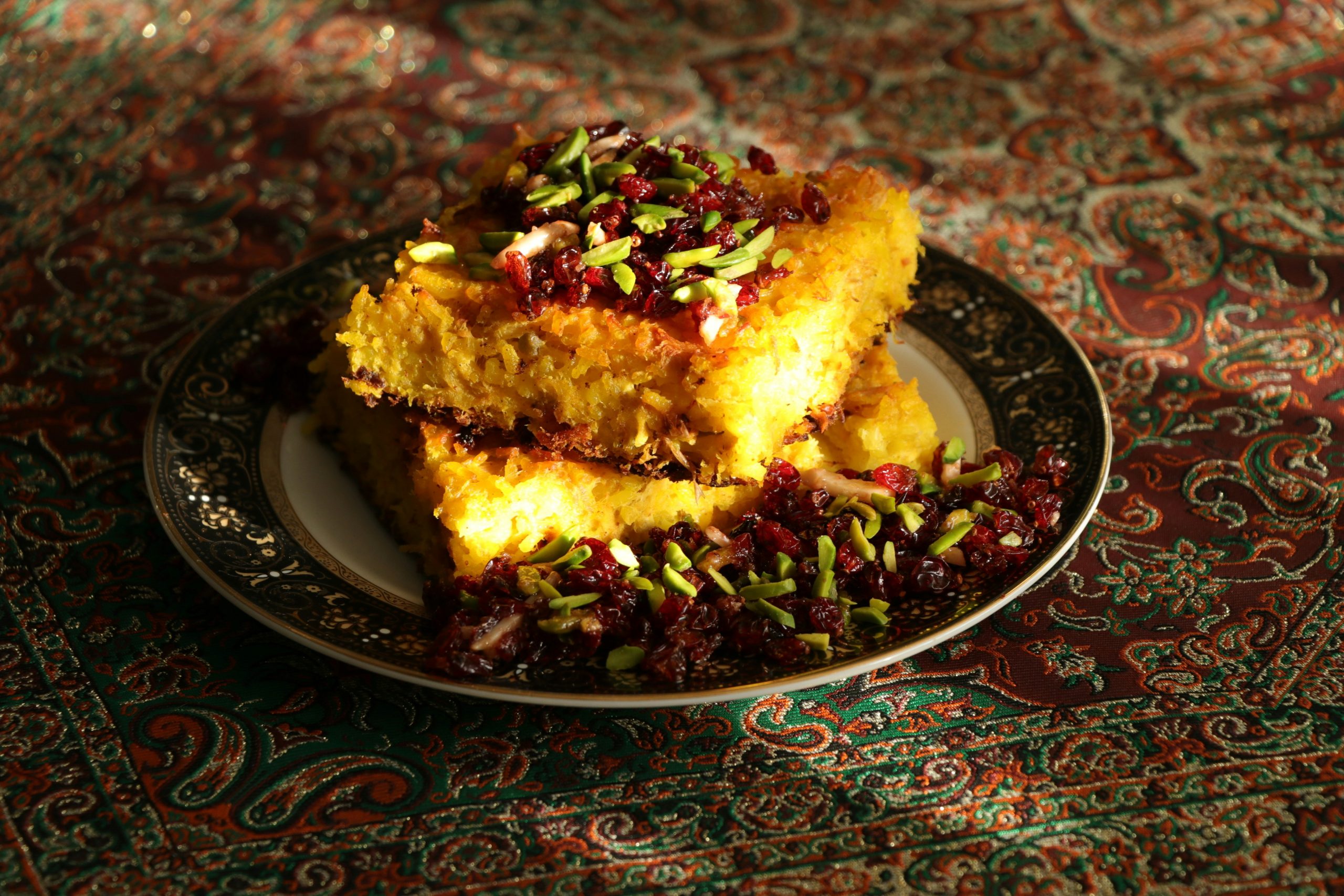Rice, a staple ingredient in cuisines worldwide, takes on an elevated status within Persian culinary tradition. Unlike its counterparts, Persian rice isn’t just a side dish but a masterpiece of flavors, textures, and techniques. Its superiority lies not only in the variety of rice used but also in the meticulous preparation method that results in two distinct characteristics: an unrivaled fluffy texture and the coveted golden crust known as Tahdig.
The Selection of Rice :
The journey to crafting elite Persian rice begins with the selection of the right type of rice. Basmati rice, with its long grains and fragrant aroma, is the preferred choice. This variety is prized for its ability to absorb flavors and remain separate, neither sticky nor clumped, after cooking.
The Preparation Process
The preparation of Persian rice is an art form, a ritual passed down through generations, embodying the essence of Persian hospitality and tradition. This process is characterized by several key steps:
- Rinsing and Soaking: The rice is thoroughly rinsed with cold water until the water runs clear, removing excess starch. Then, it’s soaked in salted water for several hours, a step that enhances the rice’s texture and allows it to expand fully upon cooking.
- Parboiling: The soaked rice is briefly boiled in plenty of salted water. This parboiling process partially cooks the rice, ensuring that each grain remains separate.
- Draining and Layering: After parboiling, the rice is drained and then layered in a pot with generous amounts of butter or ghee and, often, with additional ingredients like saffron, herbs, or berries. This layering technique contributes to the rice’s complexity of flavors.
- Creating the Tahdig: The bottom of the pot is usually lined with a mixture that might include thinly sliced potatoes, bread, or even tortillas. This base, combined with the heat and the oil, forms the Tahdig, the crispy golden crust that is the hallmark of Persian rice.
- Steaming: The pot is then covered and cooked on low heat. The rice steams, becoming incredibly fluffy and fragrant. A towel is often placed between the lid and the pot to absorb excess moisture, preventing the rice from becoming soggy.
Tahdig: The Crown Jewel
Tahdig, literally meaning “bottom of the pot,” is what sets Persian rice apart. This crispy, golden crust is highly sought after and considered a delicacy. Achieving the perfect Tahdig is a skill, a testament to a cook’s prowess. It’s the crunchy, flavorful reward for mastering the nuances of Persian rice preparation.
A Cultural Emblem
Persian rice, especially with its Tahdig, is more than just a dish; it’s a cultural emblem, representing centuries of culinary refinement. It’s a celebration of texture and flavor, a centerpiece at gatherings, and a source of pride in Persian cuisine.


